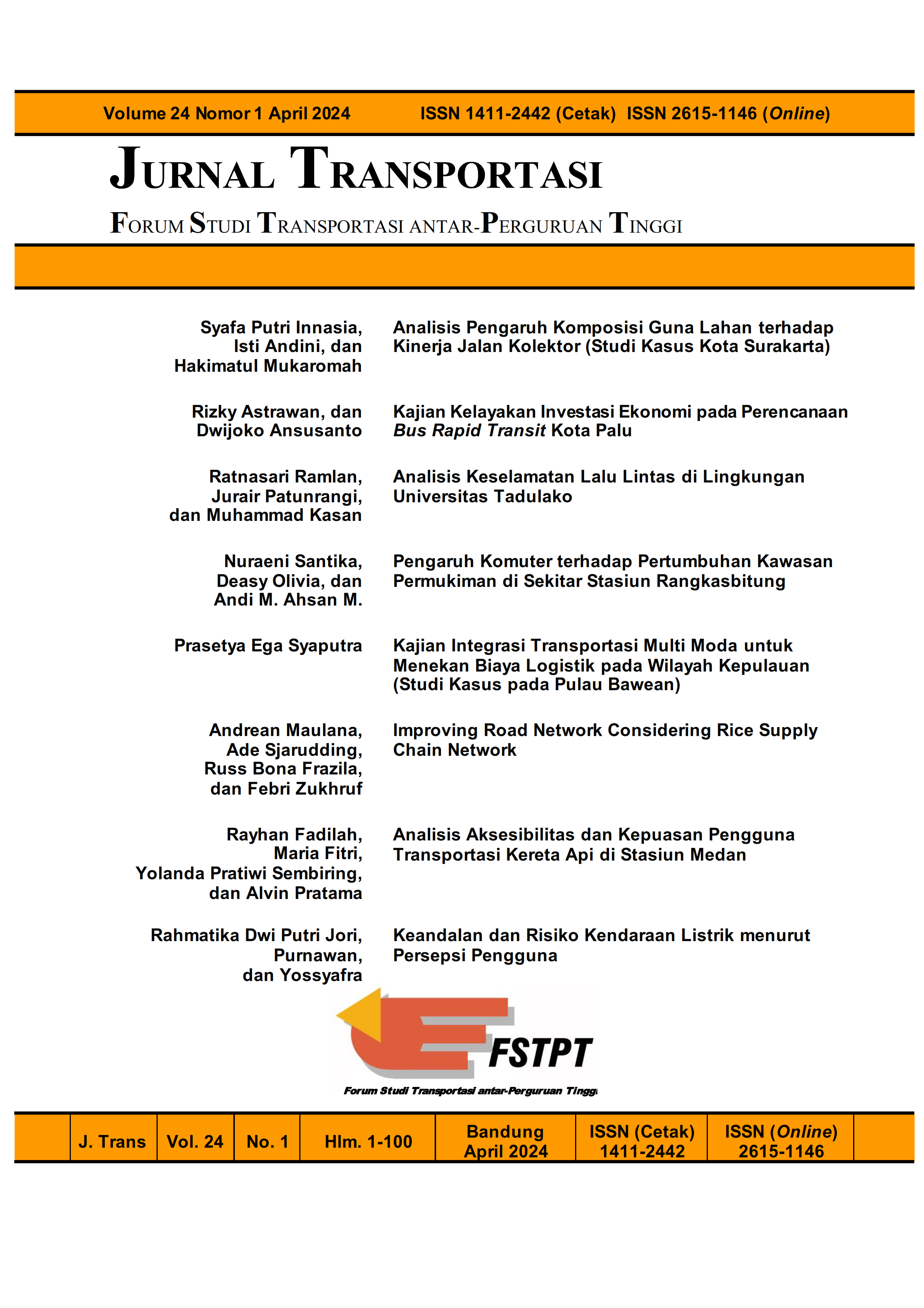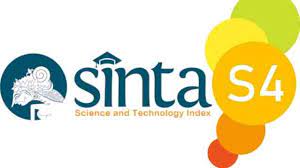IMPROVING ROAD NETWORK CONSIDERING RICE SUPPLY CHAIN NETWORK
DOI:
https://doi.org/10.26593/jtrans.v24i1.7911.62-73Kata Kunci:
method of successive averages, rice supply chain, stakeholders, supply investment ratioAbstrak
The stakeholders involved in the rice supply chain, who rely on transportation networks, have a shared objective of enhancing their operational efficiency to maximise surplus. This paper presents a model that aims to evaluate the impact of road network improvement on the stakeholders involved in the rice supply chain network. The entities considered as related stakeholders in this context encompass collectors, wholesalers, and retailers, that have a distinct logistics cost structure and profit ratio.The model is developed within the framework of bi-level optimization, in which the upper level decides the road network improvement action and the lower level describes the optimality conditions of the rice supply chain network. The method of successive averages (MSA) is proposed to solve the lower-level problem, where a full enumeration-based approach is conducted in the upper-level problem The case study is situated in the Cugenang District of the Cianjur Regency, an area renowned for its productivity value in the rice farming sector, surpassing other sectors in economic significance. The numerical experiment evaluates three alternatives for road development, with the alternative consisting of solid connectivity to stakeholders yielding the greatest surplus, refer to Alternative 1 with highest surplus investment ratio (0.0000232).






